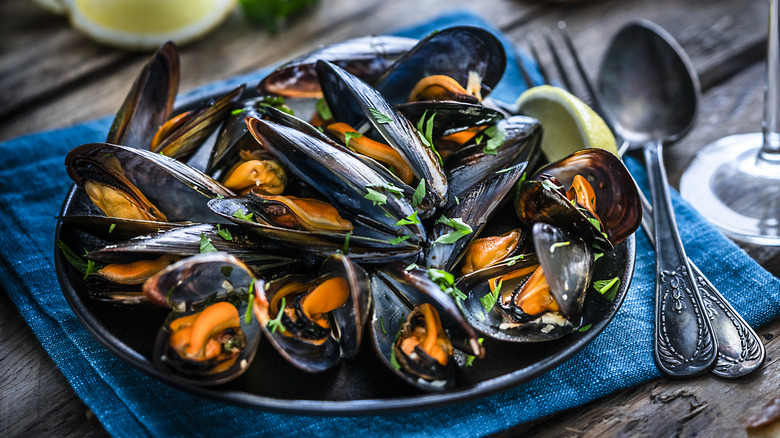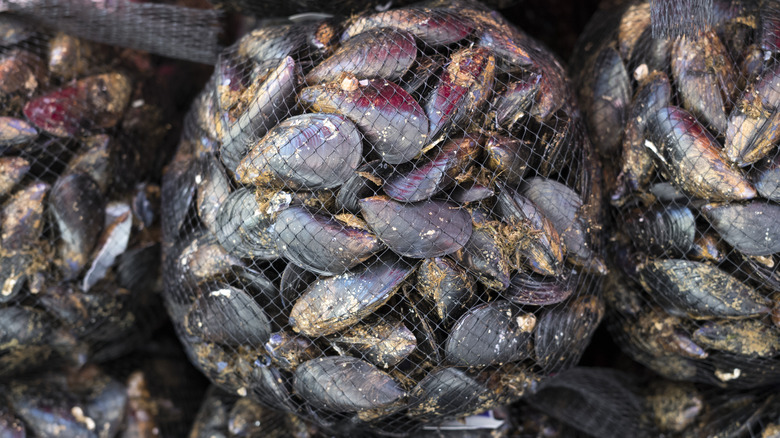Why Mussels Tend To Taste Better Toward The End Of The Year
Fishing is a strange business. There is a season for everything, and, within that season, there's a window for catching seafood at its prime. Sometimes, this window lines up with advantageous weather. Other times, it does not. Take mussels as an example. Being some of the most prolific mollusks, most marine species, like the blue mussel, can be harvested throughout the year in many regions. However, they taste best when the air turns frigid and windy and the ice-cold water churns. Yes, mussels are in their prime during the throes of winter. To understand why, we must take a look at their natural life cycle.
Newly hatched mussels are free-swimming creatures that attach themselves to rocks or other solid ocean objects as they mature. Once anchored, they spend their lives feeding on plankton and other material in the water, which is most abundant in the summer. By fall and winter, adult mussels are well-fed and preparing to spawn — and this is the best time to harvest them. Winter mussels are sweeter and juicier. They also have a delectable plump and creamy consistency.
Depending on where in the world you happen to be, prime mussel season will be different. Winter in the Northern Hemisphere runs from December to February, while, in the Southern Hemisphere, it runs from June to August. Now that you're privy to this information, you need to be savvy when you buy mussels to ensure that you're getting the freshest shellfish available within their prime season.
How to buy mussels in their prime
If you happen to live in a coastal area where you have ready access to fresh fish markets, you should have no problem sourcing great tasting late fall and winter-harvested mussels. Inland purchasing, on the other hand, can be a little more tricky. Luckily, there are a few different ways you can ascertain if the mussels available at the grocery store were harvested at their prime.
If you see some out at the fish counter, you can simply ask the attending fishmonger when and where the mussels were harvested, which they are required by law to tell you. If they were caught or frozen in the cooler months, they should be in that sought-after prime condition. If the mussels are bagged, they should come with a tag that lists the harvest location and date. If the harvest date reads between October and March — or April and September for Southern Hemisphere buyers — the mussels are at their peak.
This is not to say that mussels harvested at different times of the year are not going to yield great flavor for value. But if you really want some good mussels that are plump, juicy, and extra sweet, you need to aim for those that were gathered during the late fall and winter months. If you already love cooking with mussels, you'll love the succulent "in season" edition of the shellfish even more.

